Day 30 – 33: the end of a scientific and human journey
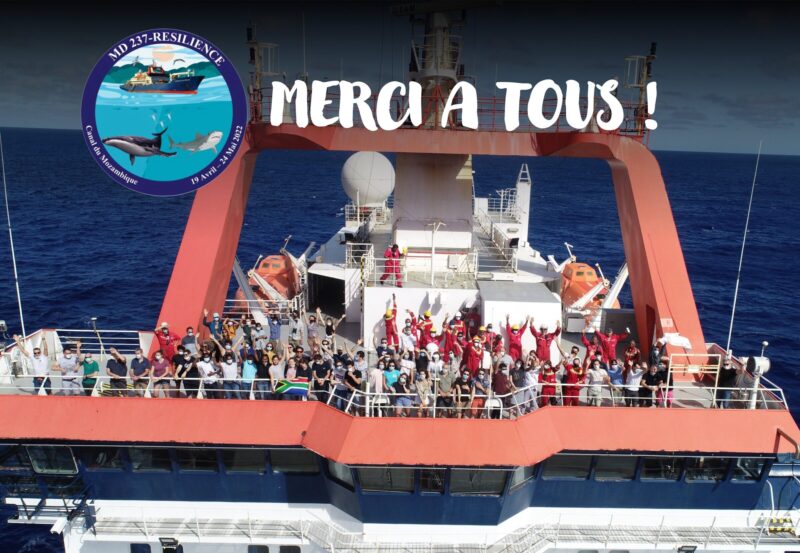
May 19th-22nd 2022 | In transit toward the Reunion Island
Alycia Valvandrin, Eugénie Dufour, Guerric Barrière, Lucas Zaccagnini & Salomé Pellé
This is it, the RESILIENCE campaign on the Marion Dufresne is coming to an end! As we reported in our last Blog article, the last CTD was launched the 16th of May, with a bottle of champagne hanging on it to mark the end of the last oceanographic mission of Jean-François Ternon, the leader of this campaign. We all celebrated this symbolic event with a little glass in the hand (with moderation of course!) since most of the covided people just found their freedom, after 11 days of confinement.
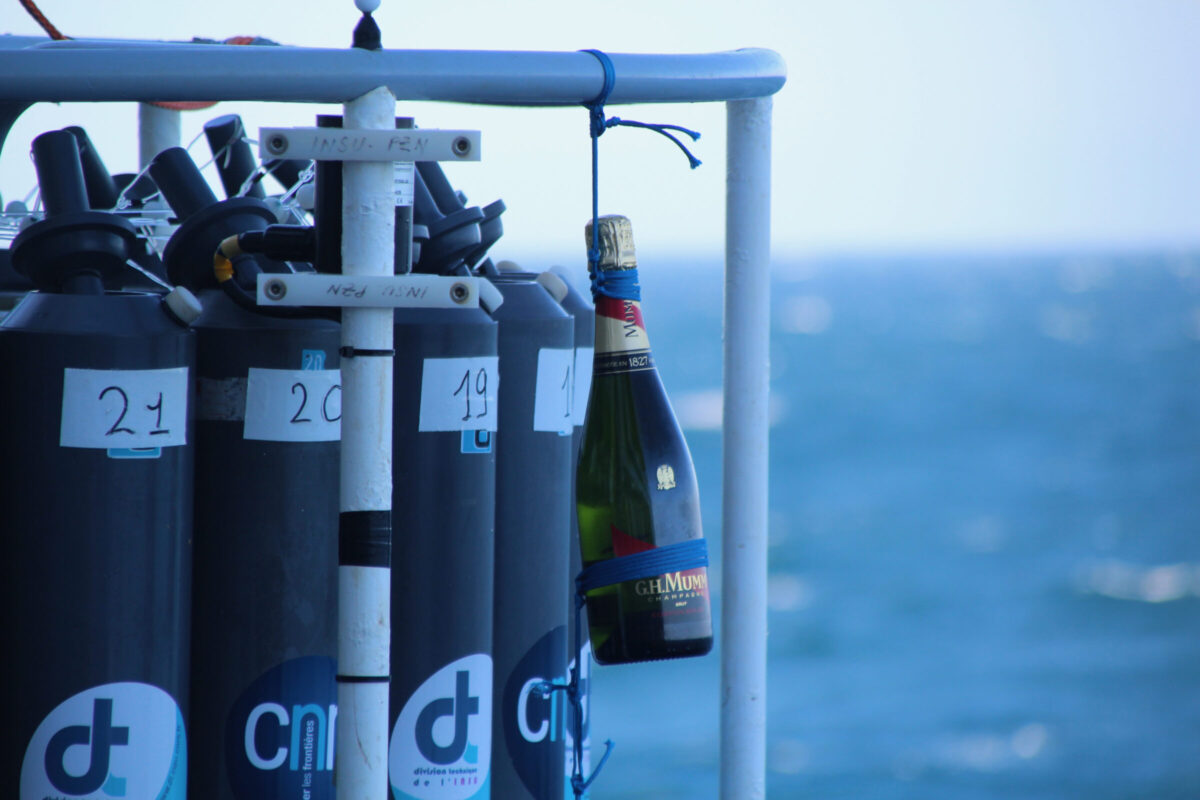
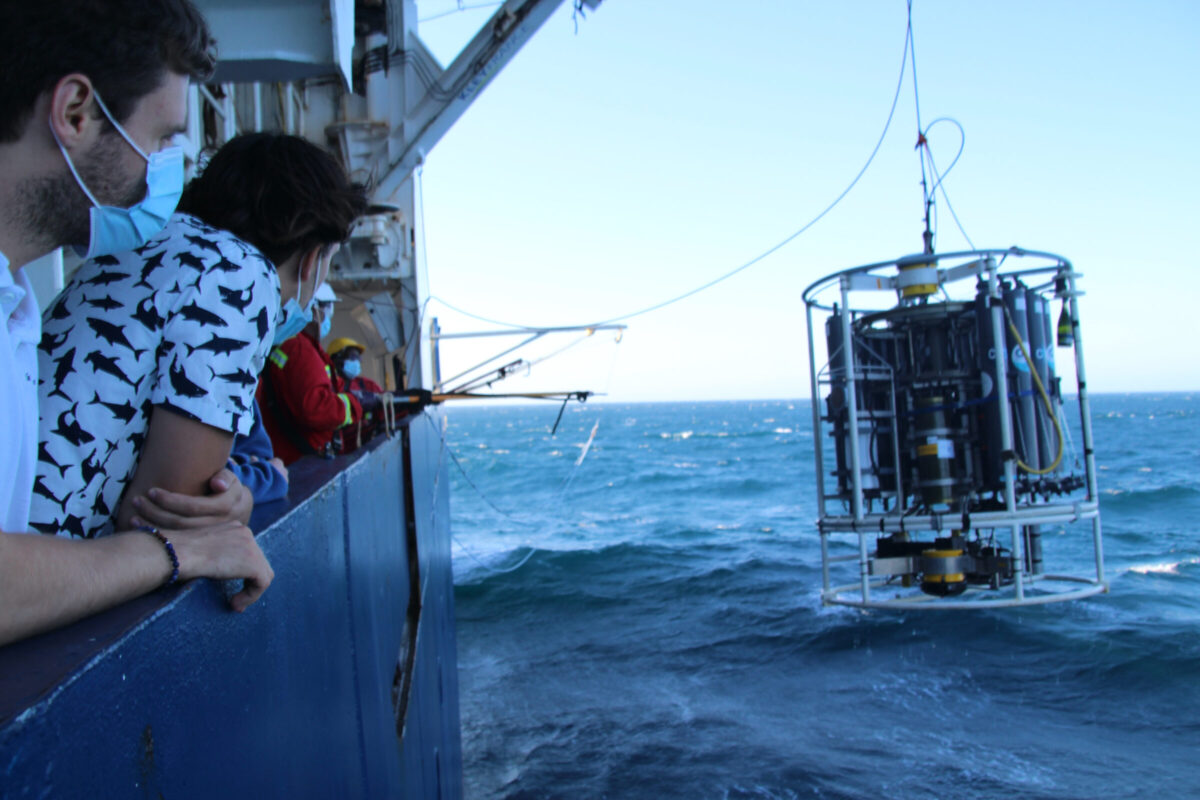
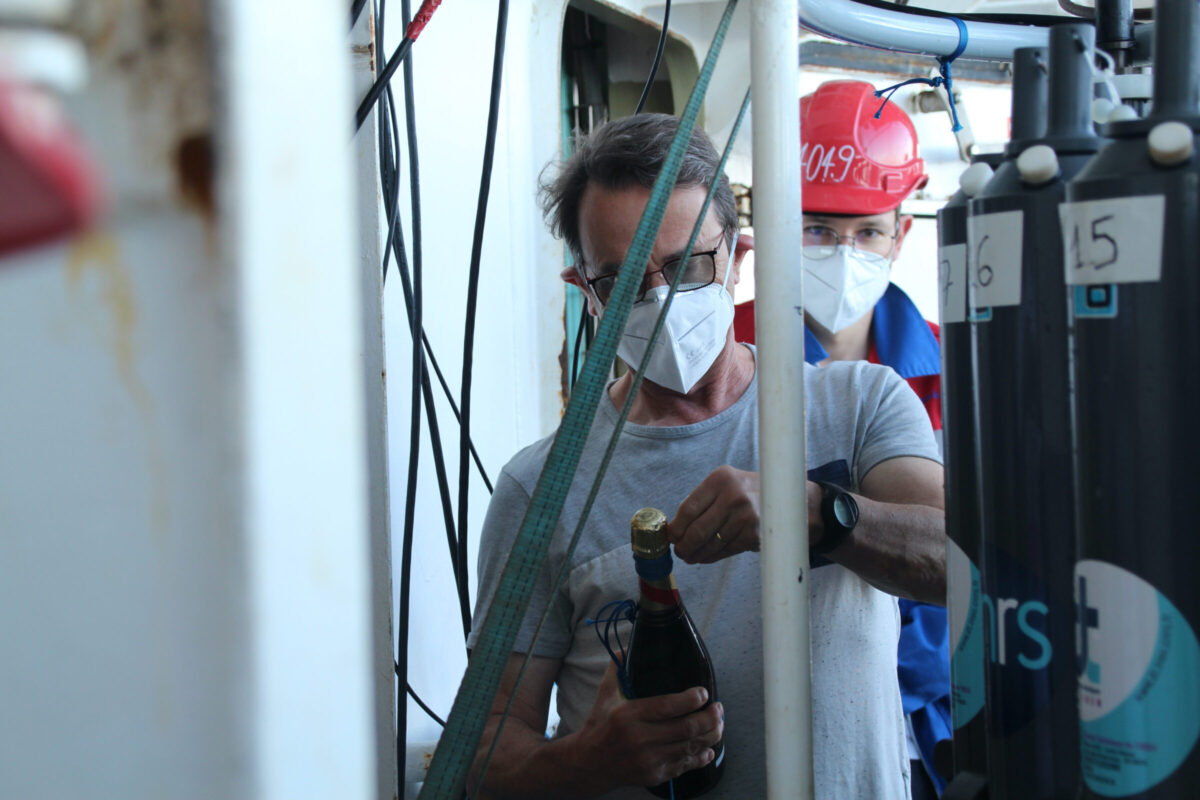
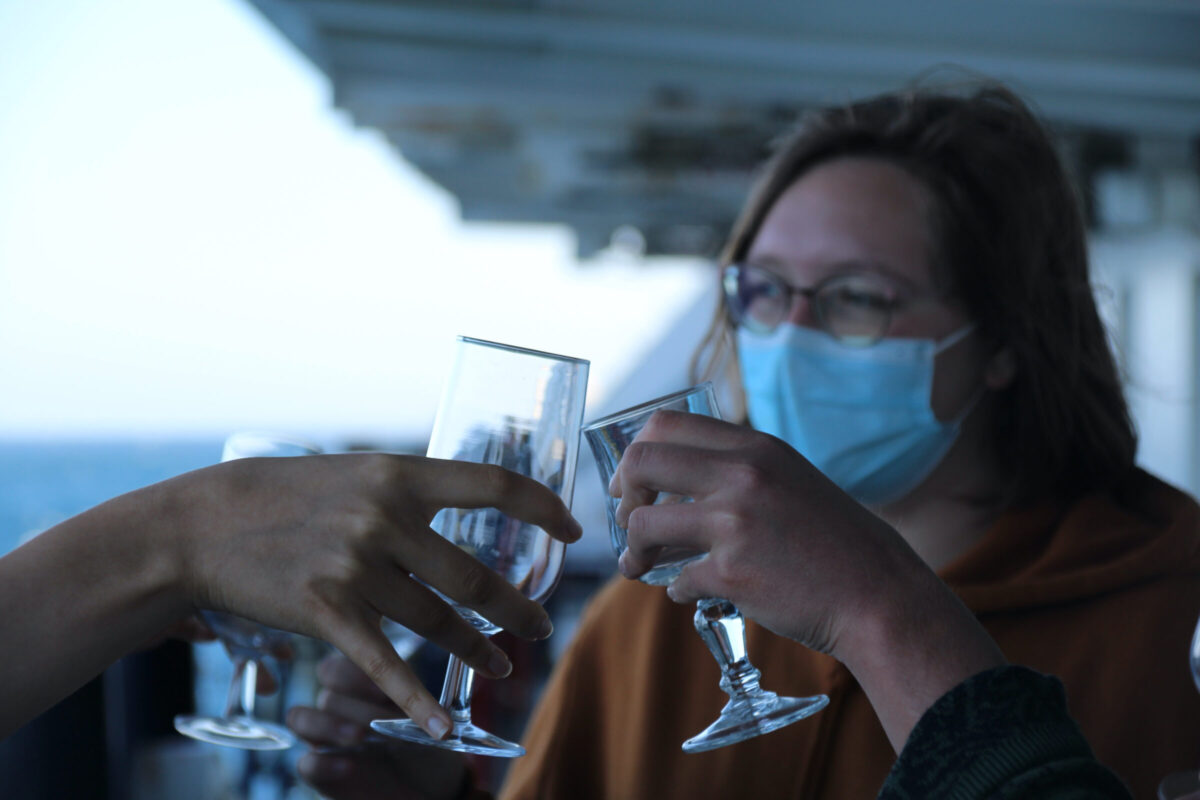
Now that the science is over, it’s time to pack up and prepare for our arrival in La Reunion, which brings its share of emotions. Even if without scientific shifts, these last days on board remain rich in activities. Seminars are numerous, in order to give the opportunity to all those who wish to share their work. Alexandre Epinoux and Felipe Artigas gave us a joint lecture Automated monitoring of phytoplankton, while Sara Tembé and Lucas Zaccagnini presented us either their thesis subject or their contribution to a conservation NGO. Their presentations were similar since their objective was the same: to better manage fisheries and their impacts on the ecosystem, to help decision makers in their choices, and to preserve the ecosystem of the different organisms, whether it is the Mozambique shrimp for Sara or the sharks of Brittany for Lucas. Claire Lo Monaco took part in the seminars by explaining the different variations of anthropogenic carbon concentrations in the Ocean, which stores 30% of the total carbon emitted by humans (something to think about…)! Amanda Lombard also finished her second scientific conference by proposing a small challenge: to create the best marine protected area, respecting the protection objectives while being the least expensive. Congratulations to Angèle, Illona, and Nathan (from the MVP team) for creating the most efficient marine protected area possible, even better than Amanda’s model predicted! They have earned their chocolate bar!
In the same time the crew is organizing several visits to the machines and the explanations of how they work. Indeed, these areas of the boat are usually inaccessible to us for safety reasons. From the operation of the engine and the propellers to the way the soiled water is treated, we were able to have a more global view of the Marion Dufresne’s functioning, and also to be aware of all the people working under our feet, even when we are sleeping!
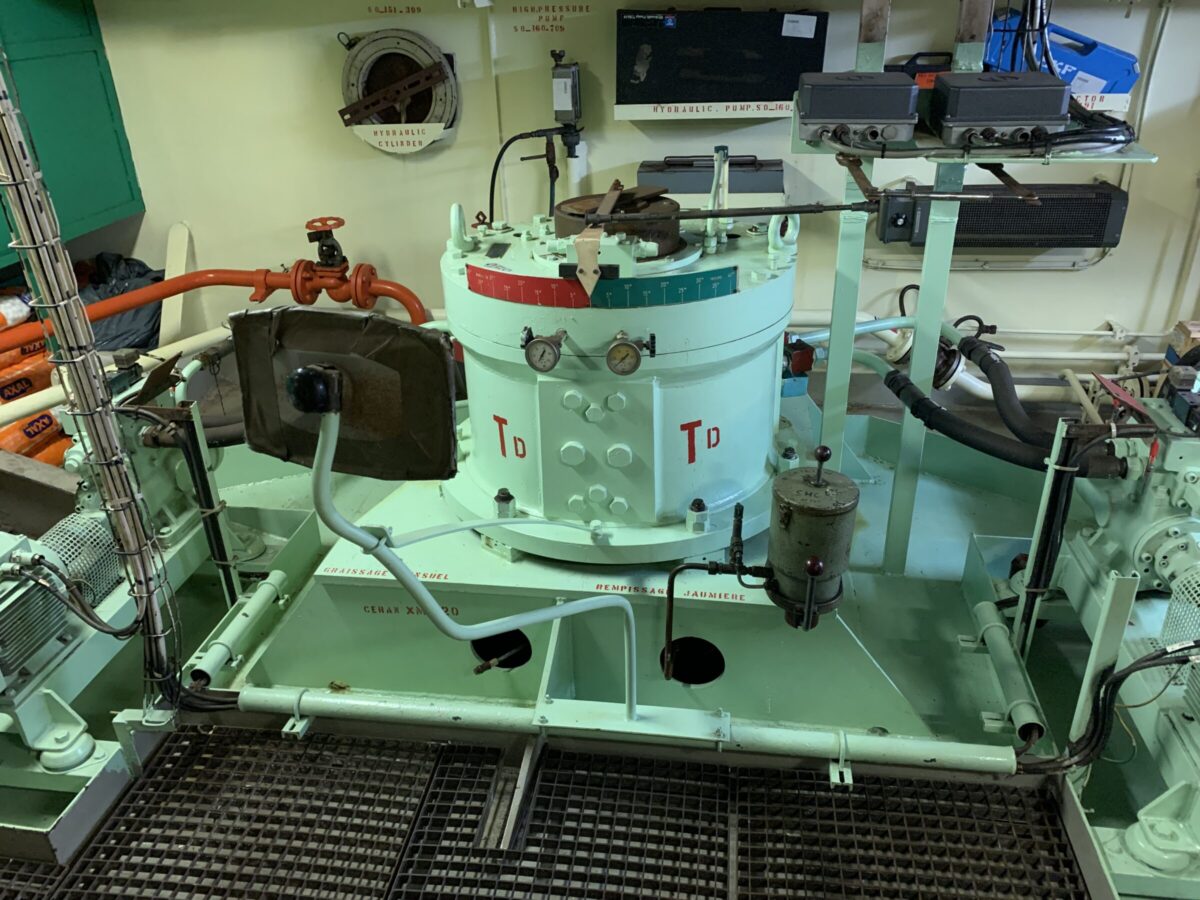
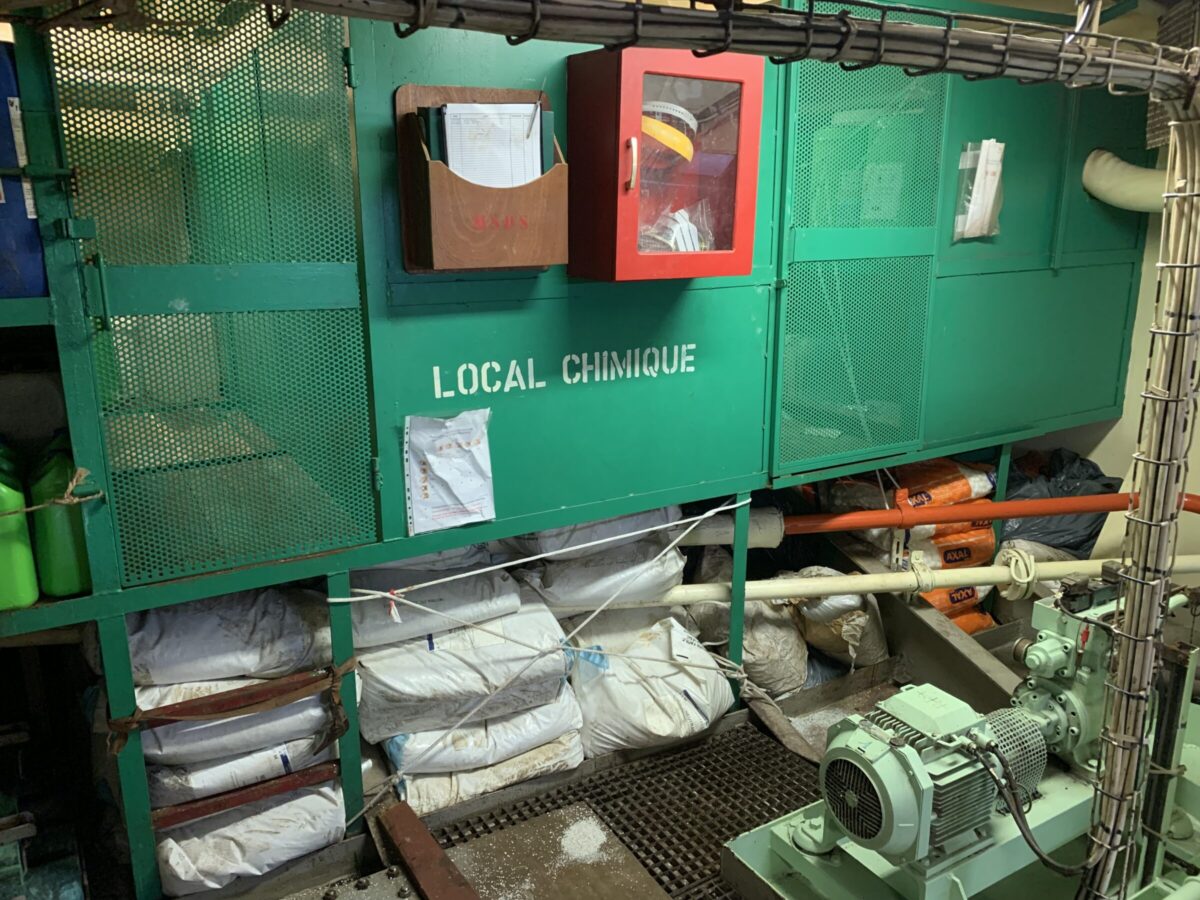
Engine (left) and chemicals room (right) of the Marion Dufresne. (c) Clément Panelle
Now that the scientific sampling has been completed, the Floating University students have also the opportunity to discover the mysterious laboratory of trace metals, nicknamed “the bubble“. Why this name? Trace metals are present everywhere in our environment and can settle on our clothes, on our skin, or even on our hair. That’s why the scientists have to recreate a place free of all particles (or at least do their best…) by wearing special suits and cleaning the laboratory as much as possible in order not to contaminate their samples. Indeed these particular metals owe their name to the their ultra-microscopic concentrations in the ocean (for being exact ranging from pico (10-12) to nano (10-9) grams of metal per sea water liter ! You can find more information on these elements from the Ryan Cloete’s seminar). The samples are collected thanks to the “geoFISH” being deployed far from the boat in order not to recover the trace metals present at the level of the boat and then analysed in the bubble. During their visit of the bubble, the students were able to try their hand at filtering and recovering sea water samples in the same way that the team did during the RESILIENCE cruise and break through the secrecy of this team, once hidden behind the plastic walls.
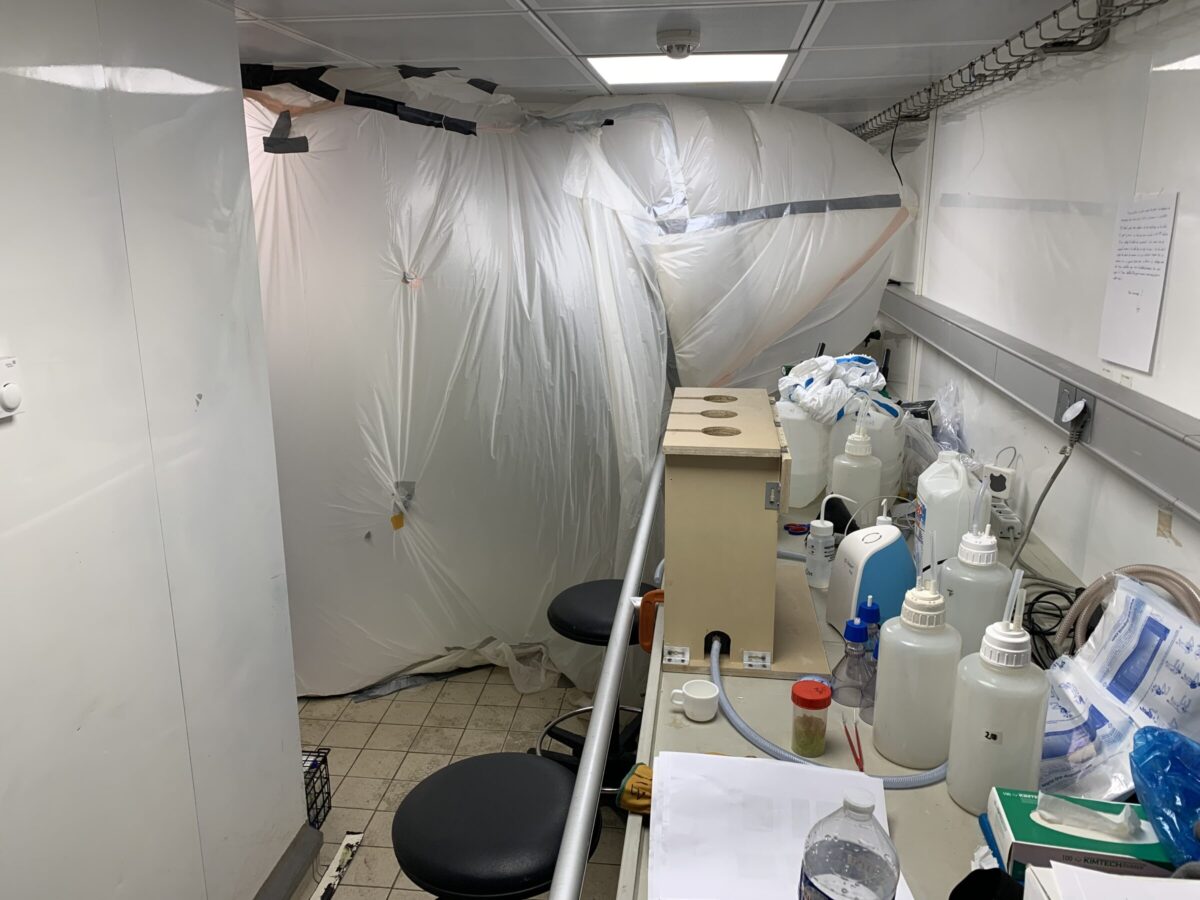
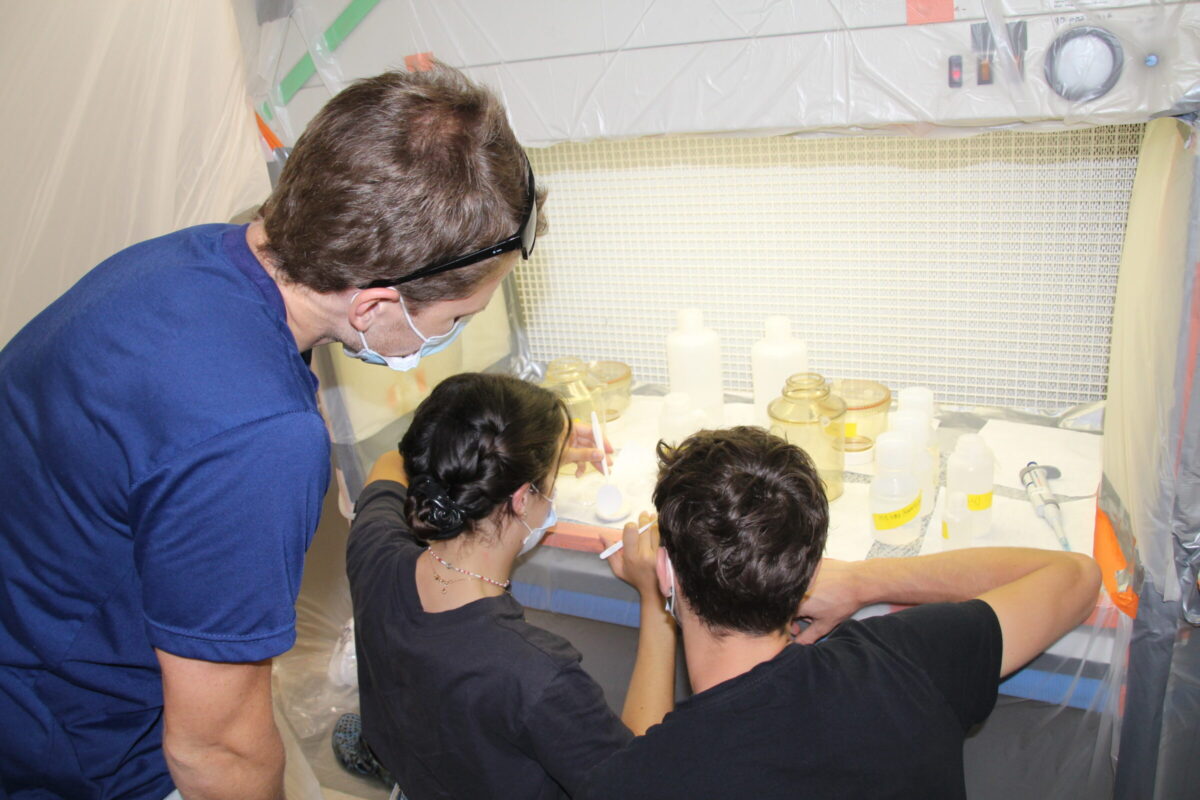
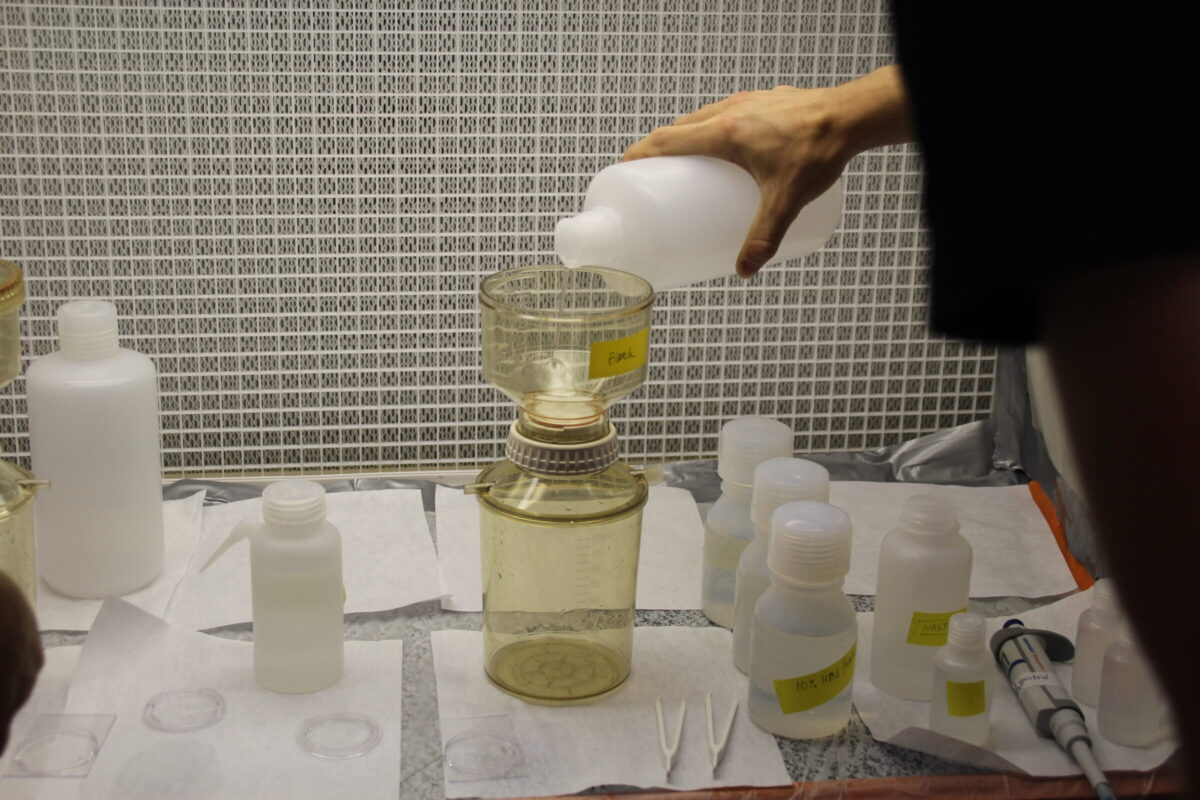
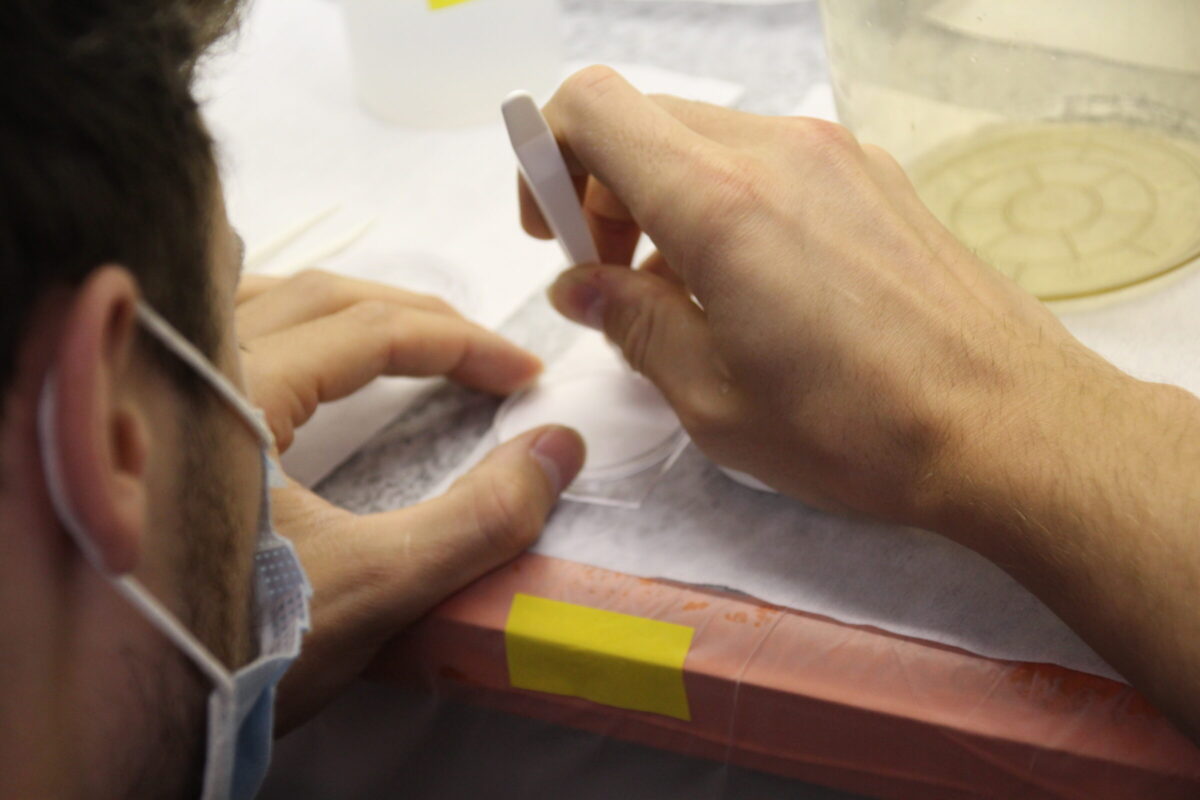
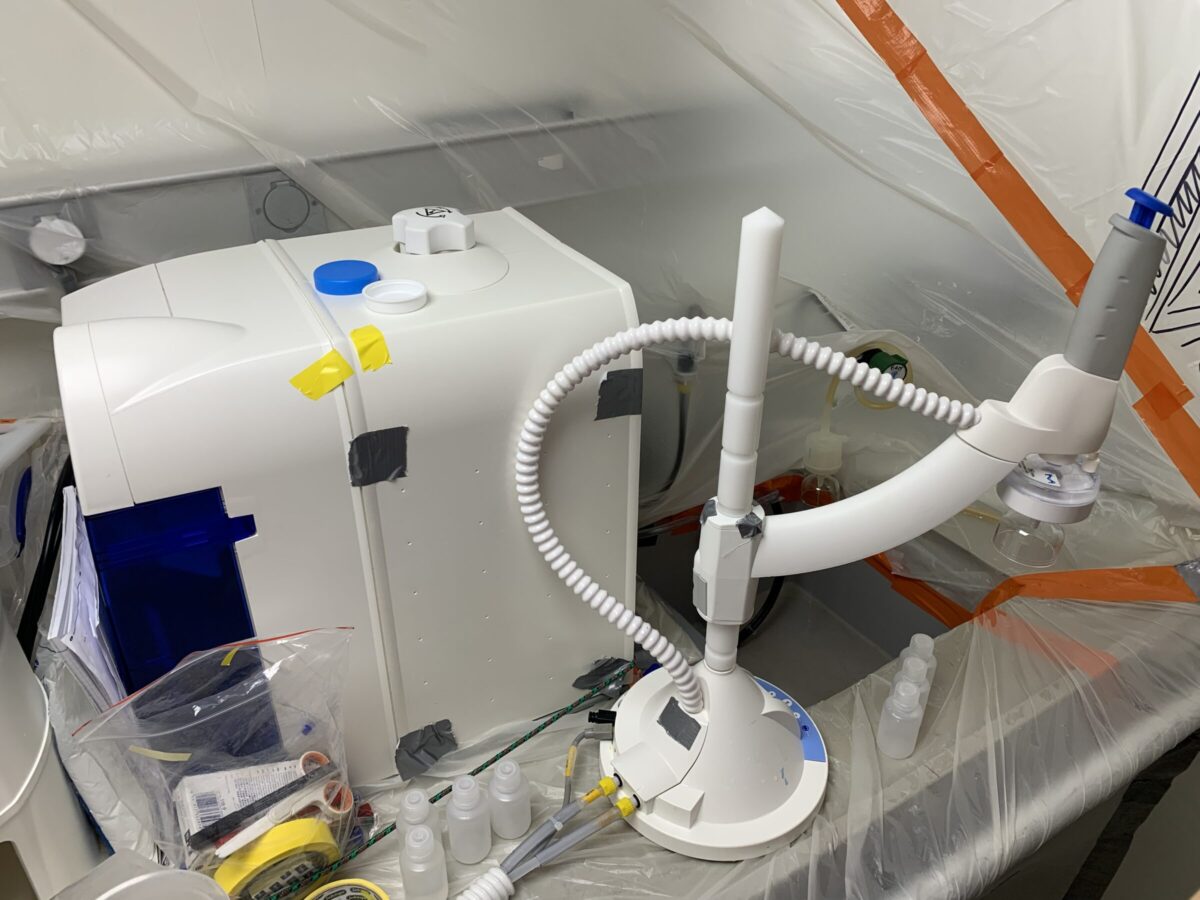
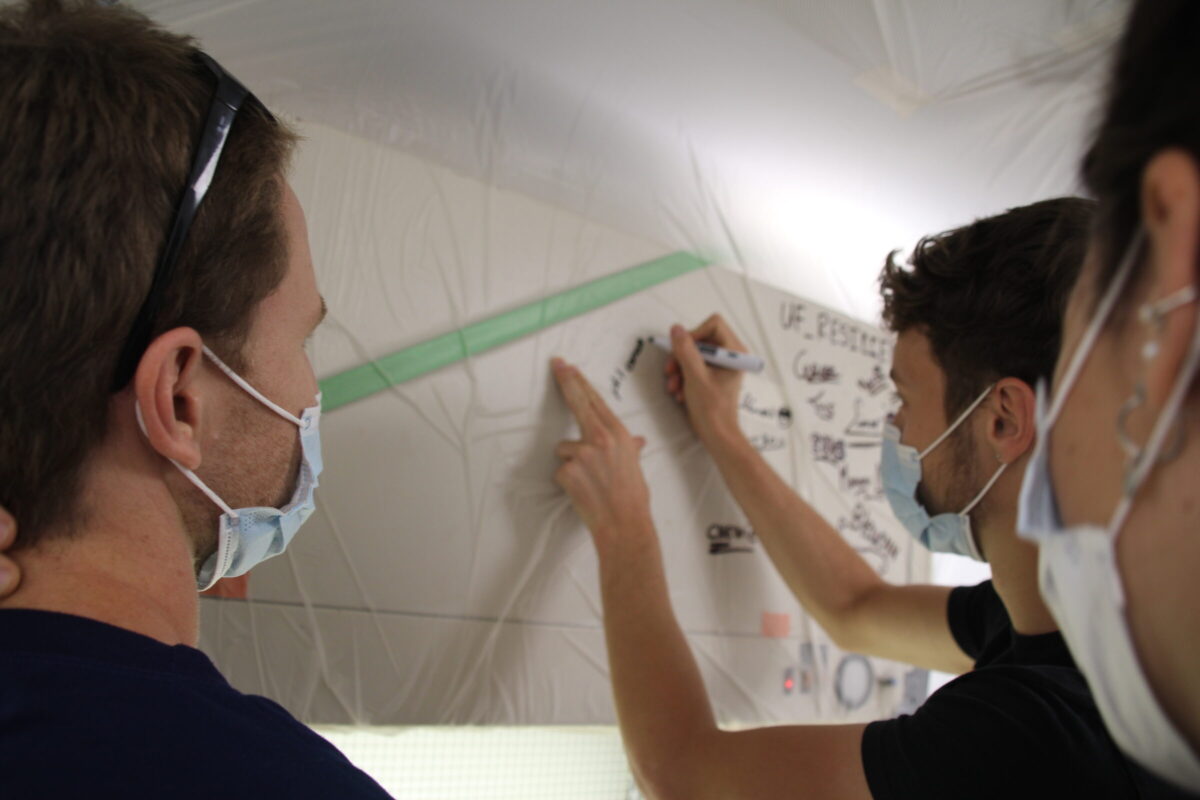
Discovering the trace metal bubble. (c) Clément Panelle
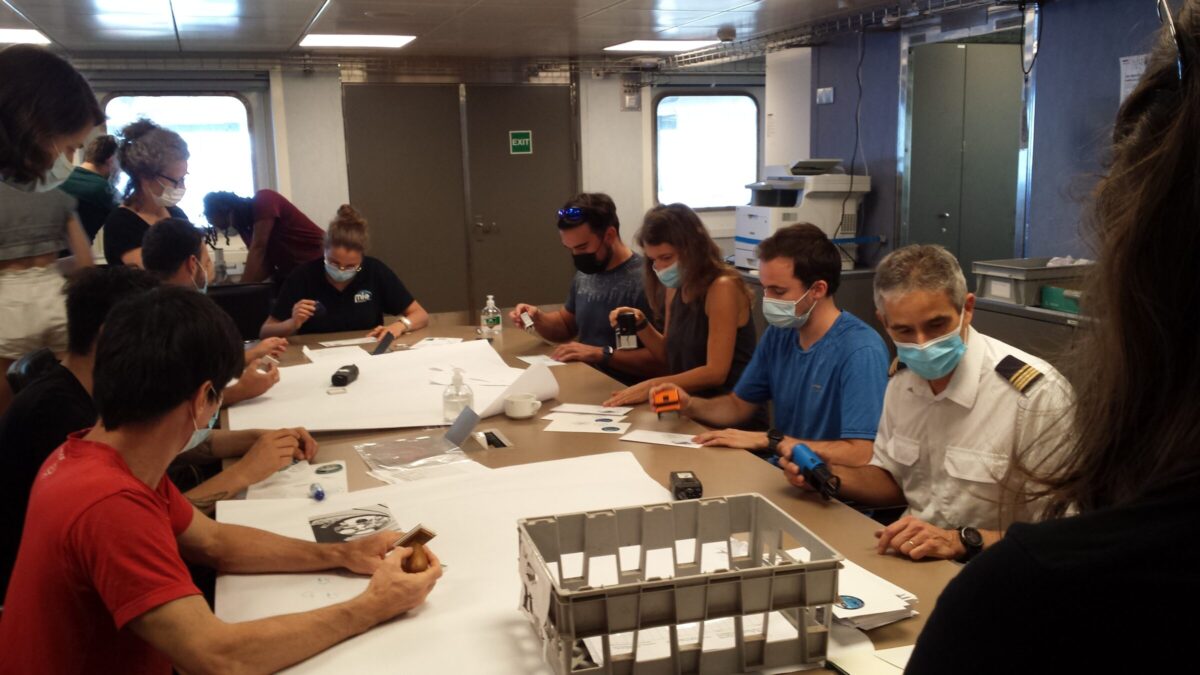
Another important activity during our last day of this campaign: mail stamping ! Philately on the Marion Dufresne is a tradition and consists in stamping all the envelopes and letters that will be sent once back on land, or not! Indeed, some people prefer to keep these stamps as souvenirs in a booklet or on other supports, knowing that these stamps are very appreciated by philatelists (stamp collectors)!
The last conference organized on board the Marion was a presentation of the main work done during the campaign by each team: the opportunity to make a first assessment of the RESILIENCE campaign. This campaign was not a smooth one and we understood that science was full of unexpected events. Here is a summary of some unplanned events: multiple malfunctions of the lift system of the CTD requiring repairs, the scanfish was deployed to replace the MVP but cracked after few days and finally the cable of the MVP broke, and the instrument is now sitting at the bottom of the Mozambique channel. Last but not least, a COVID case was detected on board and developed into a cluster board. Despite these unfortunate events, most of the teams are coming back to land with great data, thanks to the high adaptability of the embarked team, sailors as well as scientists (in this regard, you can find more information on the resourcefulness of our teams in the Eugénie’s article “Retrospective of the engineering-research alliance on a scientific cruise“).
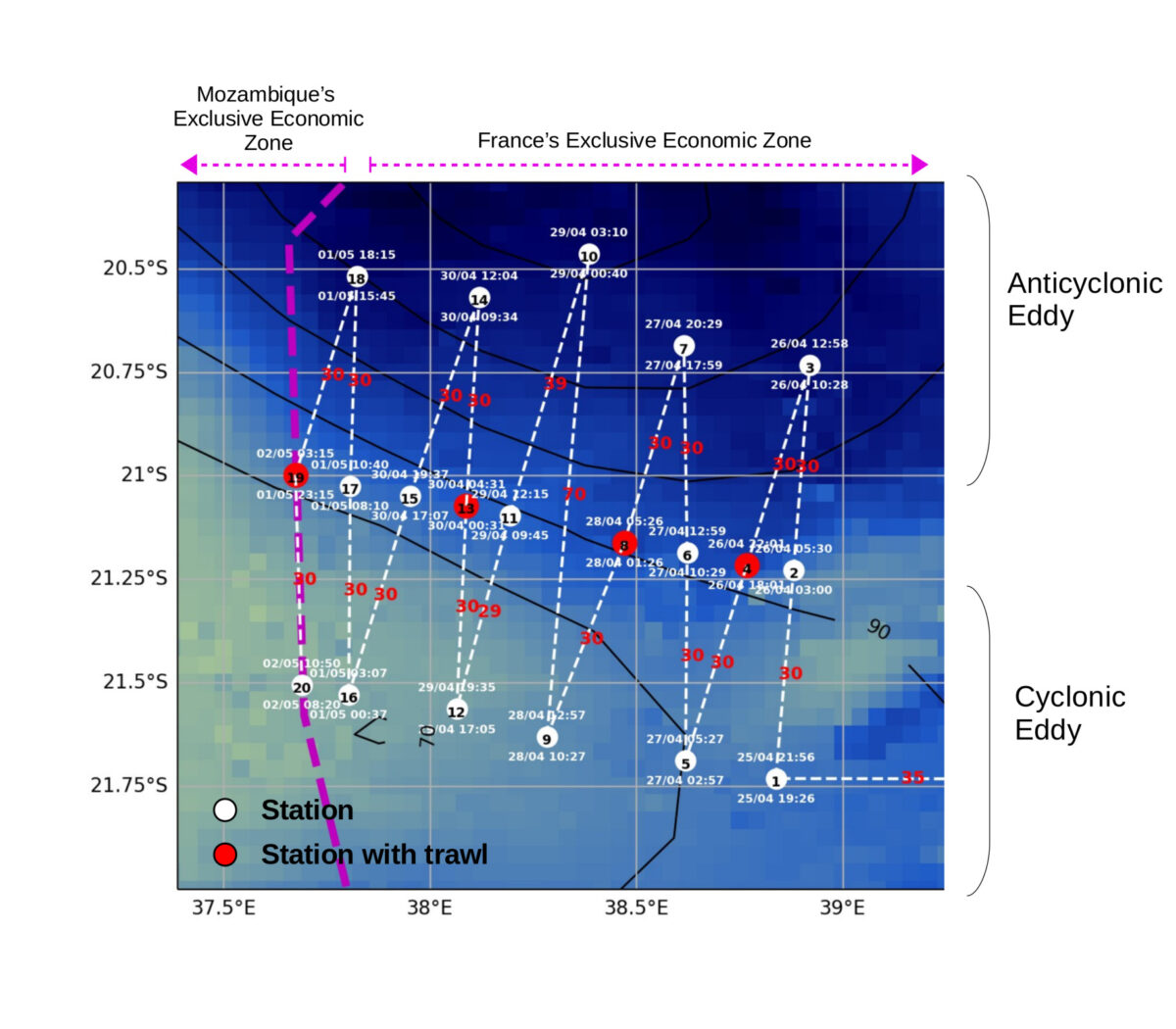
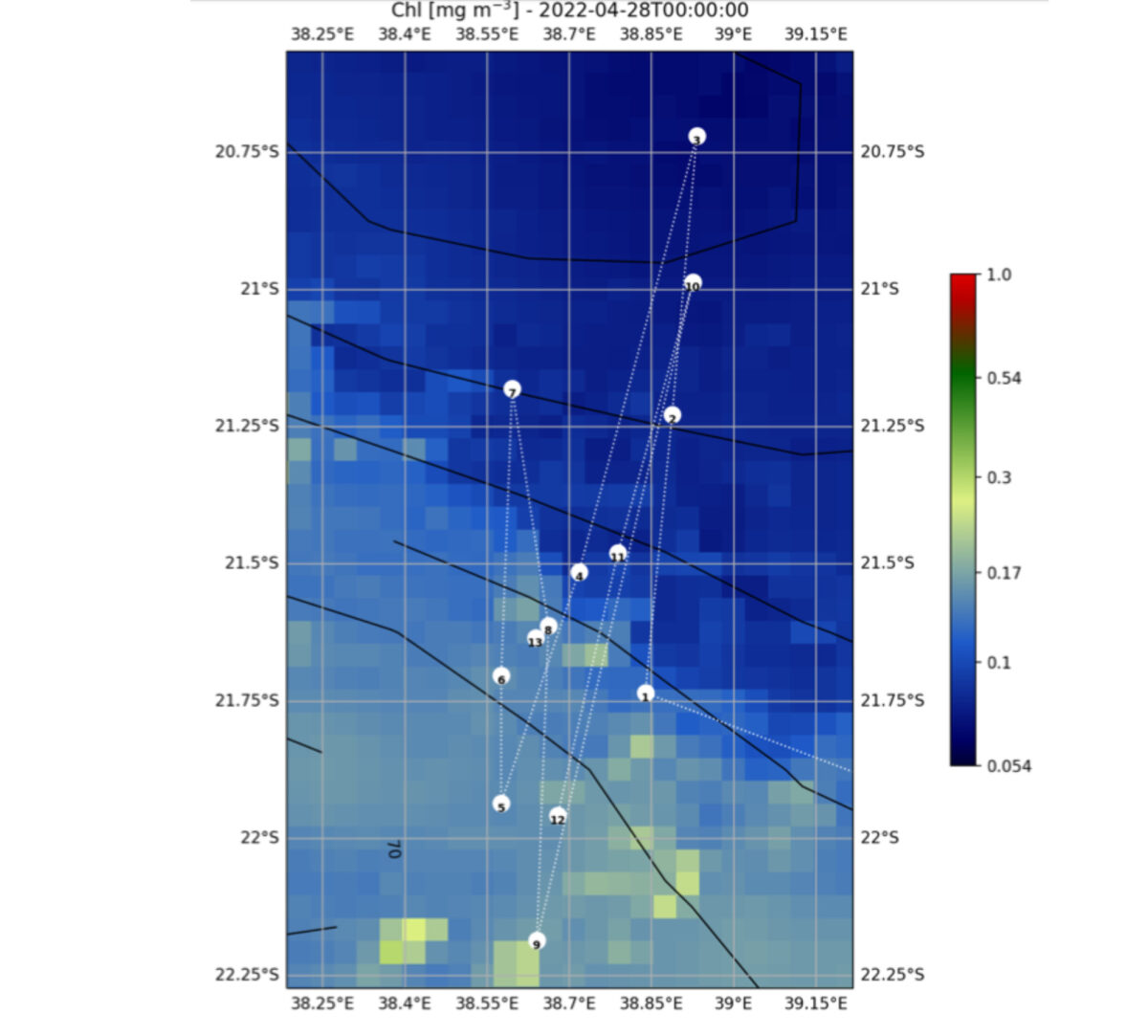
Route of Leg 1 initially planned (left) VS route carried out in the end (right). Dotted white lines indicate the trajectory of the Marion Dufresne and the white numbered circles the sampling stations. (c) Maps made by Pierrick Penven’s team

To give an idea, the CTD was deployed 51 times, the phytonet, fluroprobe and multinet were deployed 36 times and 12 mesopelagic trawls were carried out. The UF students helped the scientists for 950 hours, which was much appreciated!
But the work is far from being over, all the equipment will be unloaded, their transport organized, and all the samples recovered. Once back in their laboratories, all the teams will analyse and exploit all the data. And there is a LOT of data: for the phytoplankton team, for example, 180 filters for total chlorophyll and 666 filters for fractional chlorophyll were collected during this campaign and will have to be analyzed. We wish them good luck with all of these results, but that’s what interns are for! Hopefully, this scientific campaign will help to better describe and understand the sub-mesoscale structures and biological activities occurring in this region.
The arrival in the port of Reunion on this Sunday afternoon, 22nd of May, really marks the end of the RESILIENCE oceanographic cruise. After an antigenic test carried out by the whole crew on Sunday evening, it is with a clear mind that we can all disembark in La Reunion. The first people left a few minutes after the ship mooring, the others will still enjoy a night on board the ship and will leave tomorrow morning, as is the case for the UF students. We are just beginning to realize that this incredible experience of a month is coming to an end, and that we will all go back to our lives in a few days. Little words exchanged, hugs and tears were the order of the day tonight, which also allows us to see how strong bonds have been created during this campaign. All the scientific material has been packed to be transferred out of the boat, the suitcases are being filled and the last memories are forming in our heads. We gratefully thank all the participants of the RESILIENCE campaign and all the crew members for their warm welcome, their professionalism, their kindness, and for the darts games of course! This scientific and human experience will remain engraved in our memories!
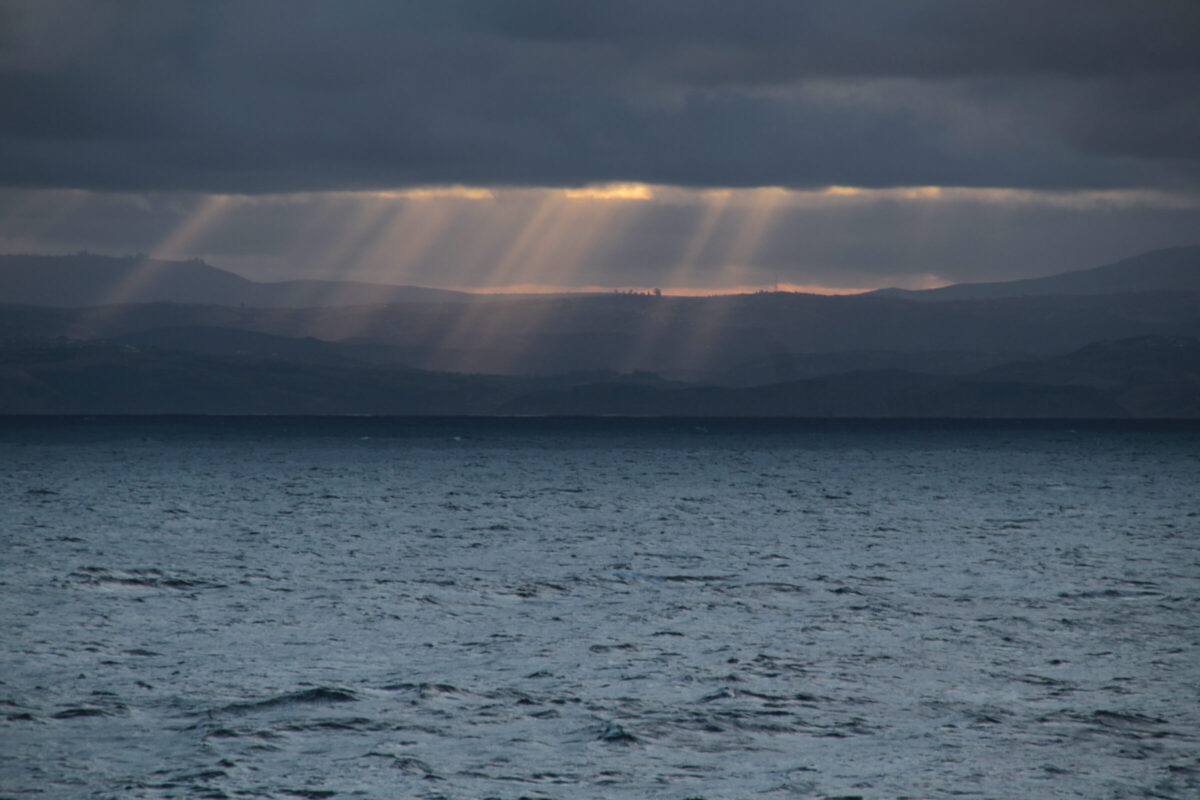
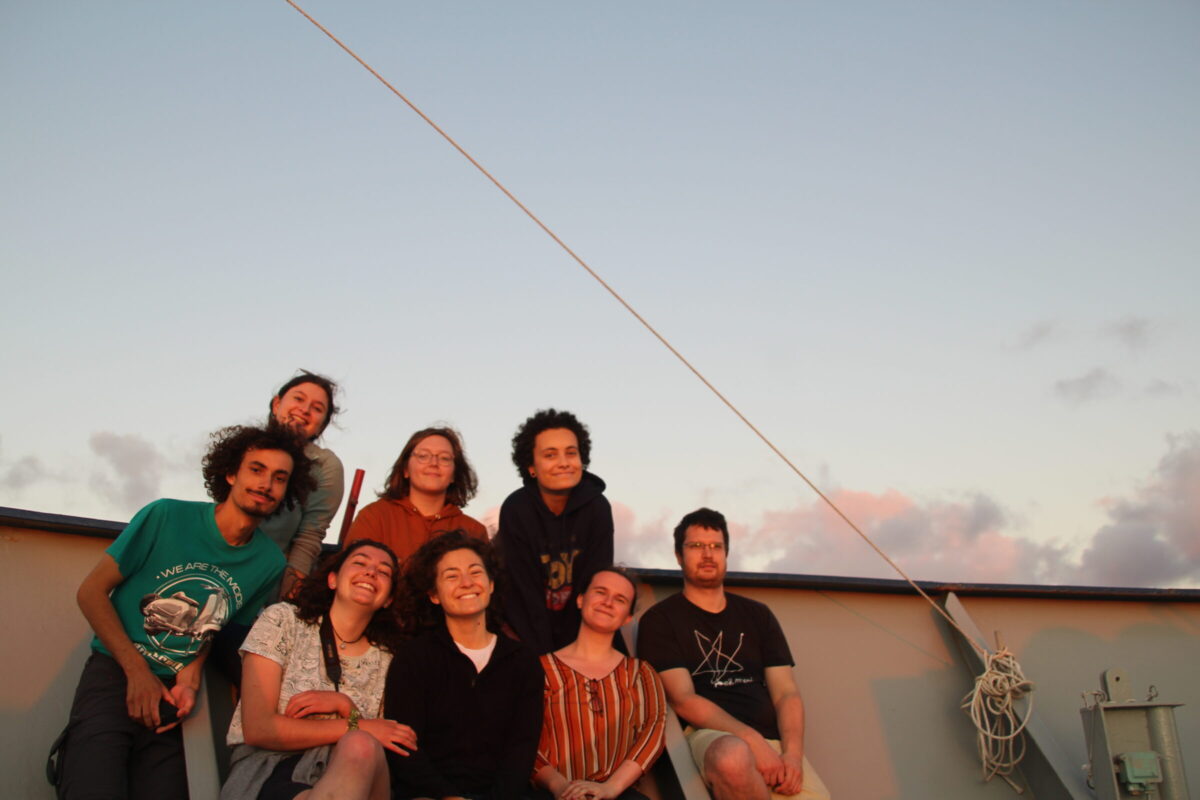
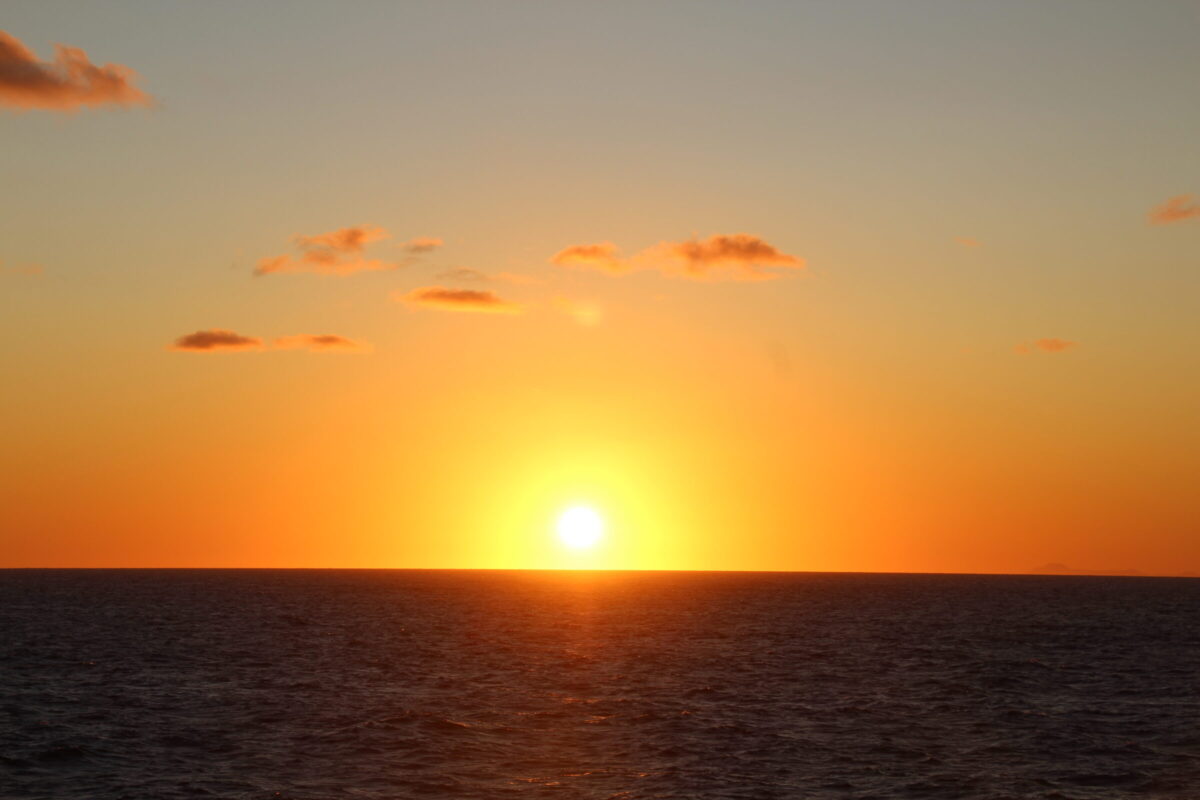
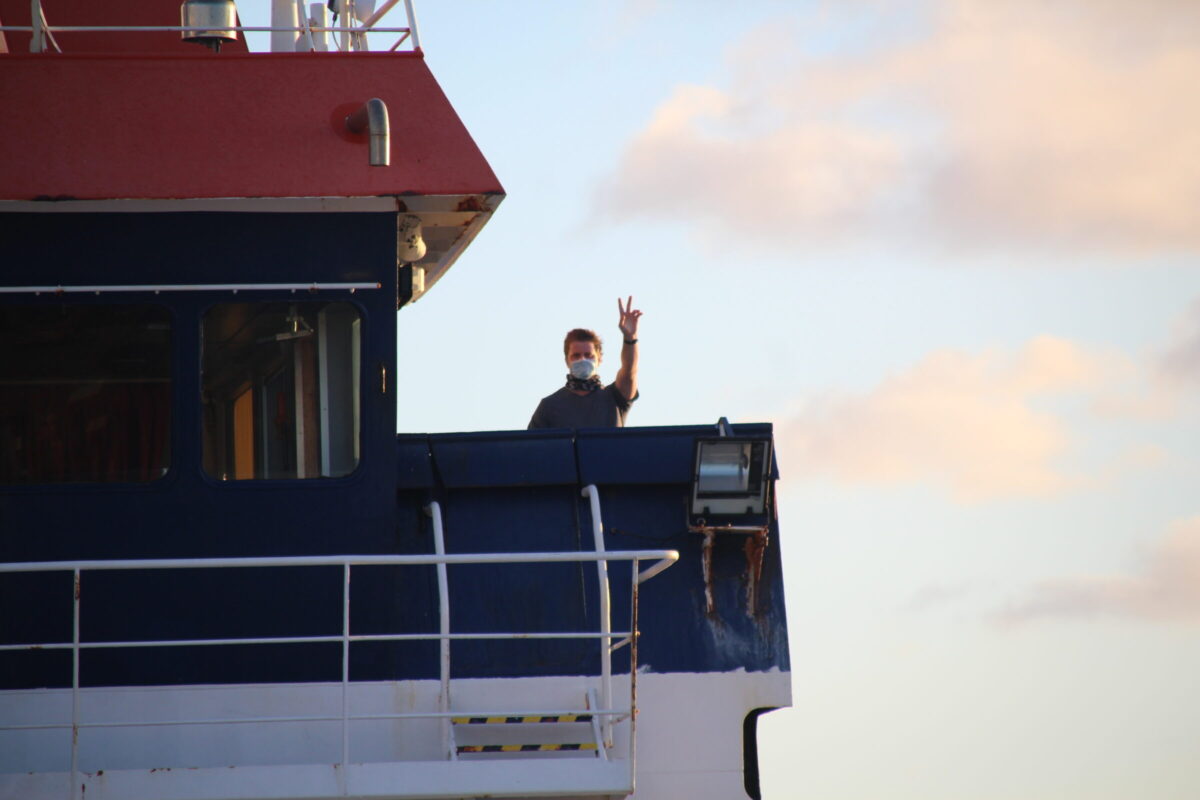
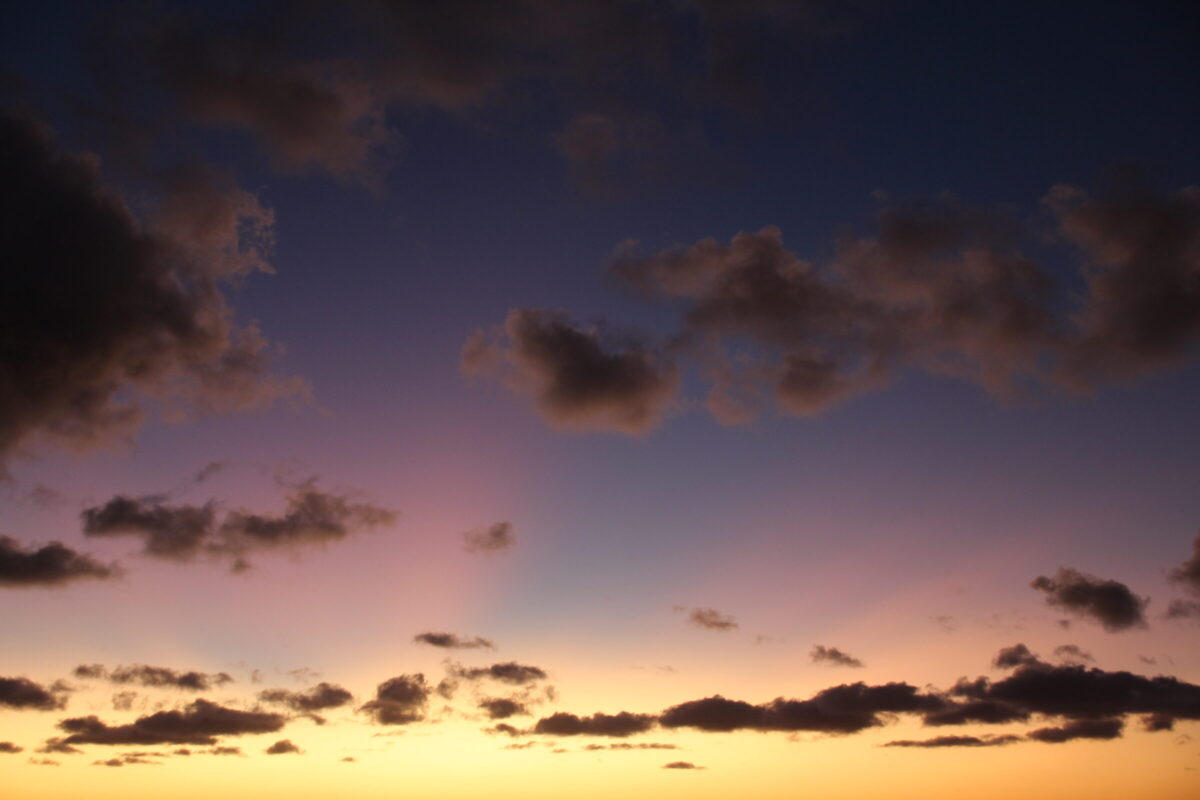

We enjoy our lasts incredible sunsets off the South African coast (top left) and on the way back before docking at the Reunion Island (bottom right). (c) UF students
To celebrate one last time together this incredible journey, we had the opportunity to put our feet down and meet in a bar near the mooring place, in a pleasant atmosphere not without the beginning of a certain nostalgia. Even if our paths separate, this experience will remain forever engraved in our memories and what it brought us goes far beyond the scientific aspect. We also hope to have been able to bring you a little bit into our journey and that this logbook will have been as pleasant to read as to realize. We will leave you by saying that finally, nothing is impossible. Thank you for being with us !
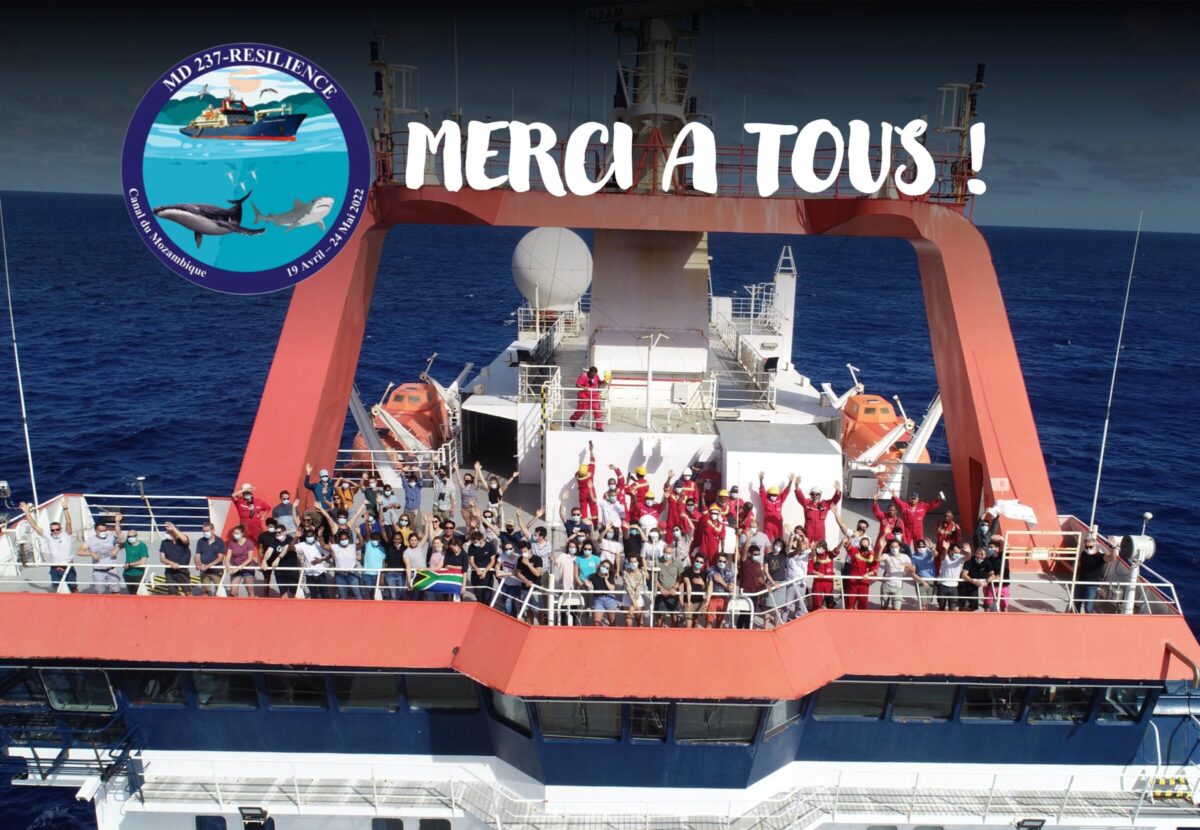
Everyone gathered on the upper deck for a last goodbye! ©Damian Mooney & Jan Hendrick De Jongh
 Attention, vous utilisez un navigateur peu sûr !
Attention, vous utilisez un navigateur peu sûr !